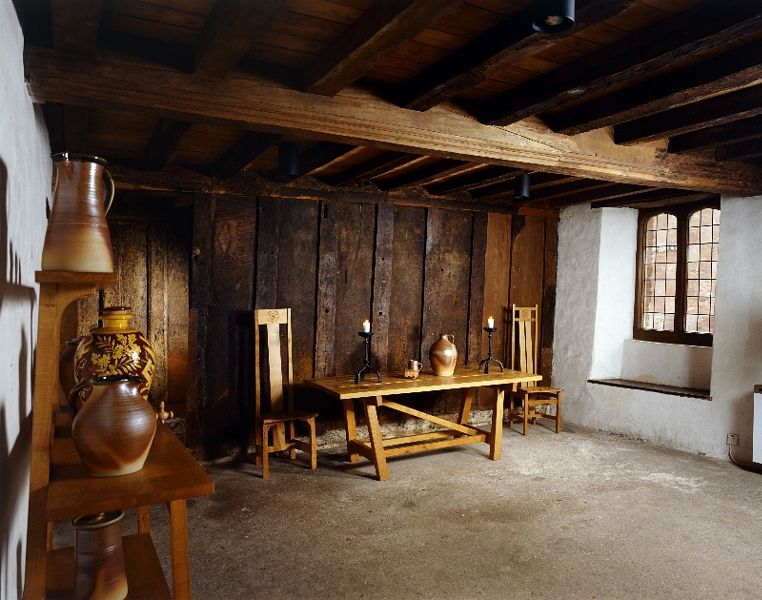13th-Century Remains Unearthed During Binnenhof Renovations

Table of Contents
The Binnenhof Renovation Project and its Unforeseen Discoveries
The Binnenhof renovation project, a large-scale undertaking aiming to modernize and preserve this iconic building, is currently underway. Such ambitious construction projects often necessitate extensive archaeological surveys. While archaeologists are routinely involved to mitigate potential damage to historical remains, the scale and significance of this particular discovery were entirely unforeseen. The discovery wasn't anticipated during the initial planning phases, highlighting the unpredictable nature of archaeological work even in well-documented areas.
- The remains were primarily found during groundwork excavations in the following areas:
- The courtyard adjacent to the Ridderzaal (Knight's Hall).
- Beneath the foundations of several existing buildings within the complex.
- Near the previously identified remains of a medieval canal.
This unexpected finding underscores the importance of incorporating thorough archaeological investigations into large-scale construction projects like the Binnenhof restoration, ensuring the preservation of our shared history.
Nature and Significance of the 13th-Century Remains
The archaeological findings consist of a remarkable collection of 13th-century artifacts, providing invaluable insights into daily life in medieval The Hague. Among the discovered items are:
- Pottery shards: A variety of ceramic fragments, suggesting diverse sources and uses, from everyday cookware to more elaborate vessels. Analysis of these shards offers clues about trade routes and dietary habits.
- Building materials: Sections of foundations, bricks, and other construction materials reveal details about building techniques and the structure of 13th-century buildings.
- Human remains: The discovery of human remains, albeit limited, may contribute to understanding health, lifestyle and burial practices of the period. Further analysis is underway.
Radiocarbon dating and other scientific analysis techniques are being employed to precisely date the artifacts and confirm their 13th-century origin. These artifacts illuminate the daily lives, economic activities, and social structures of the people who inhabited this area centuries ago, providing crucial pieces of the puzzle in understanding the development of The Hague.
Impact on the Binnenhof Renovation Timeline and Budget
The discovery of these 13th-century remains has inevitably impacted the Binnenhof renovation timeline and budget. The archaeological investigation requires careful excavation and analysis, leading to necessary delays in the construction schedule.
- Project Delay: The careful excavation and documentation of the artifacts are adding significant time to the project.
- Budget Implications: The unforeseen costs associated with archaeological fieldwork, analysis, and artifact preservation must be factored into the project's budget.
However, the collaboration between the archaeological team and the construction crew has been exemplary. The teams have worked effectively together, ensuring that the archaeological investigation is conducted while minimizing disruptions to the overall renovation plan.
Future Plans for the Discovered 13th-Century Remains
The preservation and conservation of these invaluable 13th-century artifacts are paramount. Plans are underway to ensure their long-term protection and accessibility.
- Artifact Preservation: The artifacts will undergo careful cleaning, stabilization, and conservation treatment by specialized professionals.
- Museum Exhibition: It is hoped that a significant portion of the findings will be showcased in a museum exhibition, allowing the public to appreciate this remarkable piece of The Hague's history.
- Public Display: There are ongoing discussions to create public displays within the renovated Binnenhof, integrating the archaeological discoveries into the building's narrative.
- Historical Research: Further research and analysis of the artifacts are planned to increase our knowledge of 13th-century The Hague.
Conclusion
The unexpected unearthing of 13th-century remains during the Binnenhof renovation represents a significant archaeological discovery, enriching our understanding of The Hague's rich history. The collaboration between the construction team and archaeologists showcases a commitment to preserving the past while undertaking necessary modernization. The artifacts promise to transform our understanding of medieval life in this important Dutch city. To learn more about the Binnenhof renovation and this fascinating discovery of 13th-century remains, we encourage you to explore the websites of the [link to relevant museum/government website], and visit The Hague's many historical sites. The ongoing story of the Binnenhof's renewal is also a story of uncovering our past – a past that is now, quite literally, being unearthed.

Featured Posts
-
 Samsung Galaxy S25 Ultra 256 Go Test Et Avis Complet
May 28, 2025
Samsung Galaxy S25 Ultra 256 Go Test Et Avis Complet
May 28, 2025 -
 Italian Tennis Star Sinner To Play In Hamburg Following Doping Ban
May 28, 2025
Italian Tennis Star Sinner To Play In Hamburg Following Doping Ban
May 28, 2025 -
 Ajaxs Title Push Feyenoord And Psvs Heated Chase
May 28, 2025
Ajaxs Title Push Feyenoord And Psvs Heated Chase
May 28, 2025 -
 Tough Road Ahead Sinners French Open Draw Analysis
May 28, 2025
Tough Road Ahead Sinners French Open Draw Analysis
May 28, 2025 -
 Hailee Steinfeld And Josh Allen Unveiling Their Low Key Wedding Plans
May 28, 2025
Hailee Steinfeld And Josh Allen Unveiling Their Low Key Wedding Plans
May 28, 2025
Latest Posts
-
 League Of Legends Arcane 50 Off 4 K Blu Ray Steelbook On Amazon
May 29, 2025
League Of Legends Arcane 50 Off 4 K Blu Ray Steelbook On Amazon
May 29, 2025 -
 Arcane Coldplay Collabore Avec Stromae Et Pomme Sur Ma Meilleure Ennemie
May 29, 2025
Arcane Coldplay Collabore Avec Stromae Et Pomme Sur Ma Meilleure Ennemie
May 29, 2025 -
 Arcane League Of Legends 4 K Blu Ray Steelbook 50 Off Amazon Deal
May 29, 2025
Arcane League Of Legends 4 K Blu Ray Steelbook 50 Off Amazon Deal
May 29, 2025 -
 Nouvelle Version De Ma Meilleure Ennemie Coldplay Stromae Et Pomme Reunis Pour Arcane
May 29, 2025
Nouvelle Version De Ma Meilleure Ennemie Coldplay Stromae Et Pomme Reunis Pour Arcane
May 29, 2025 -
 Coldplay Rejoint Stromae Et Pomme Pour Une Reprise De Ma Meilleure Ennemie
May 29, 2025
Coldplay Rejoint Stromae Et Pomme Pour Une Reprise De Ma Meilleure Ennemie
May 29, 2025
